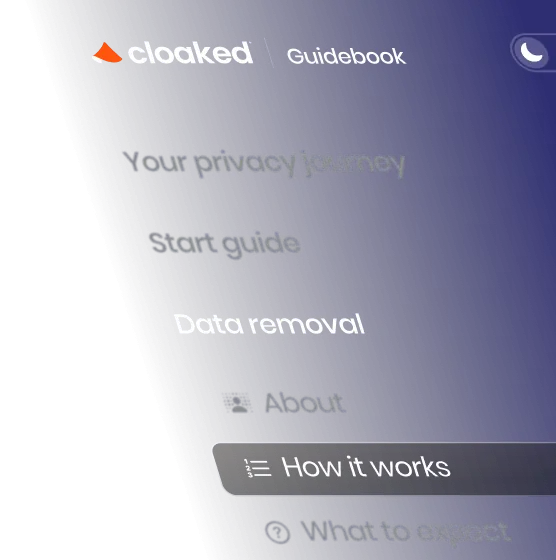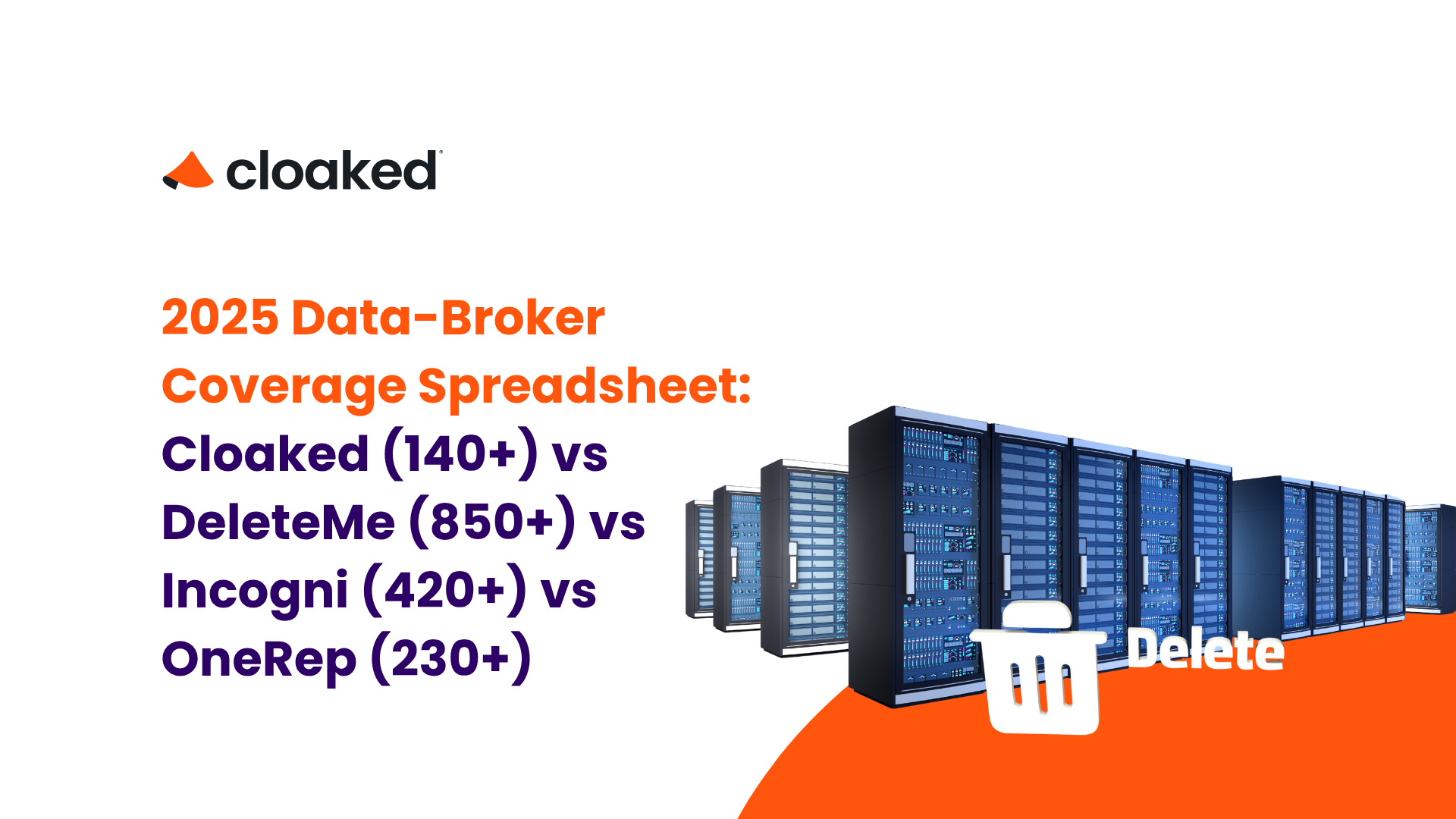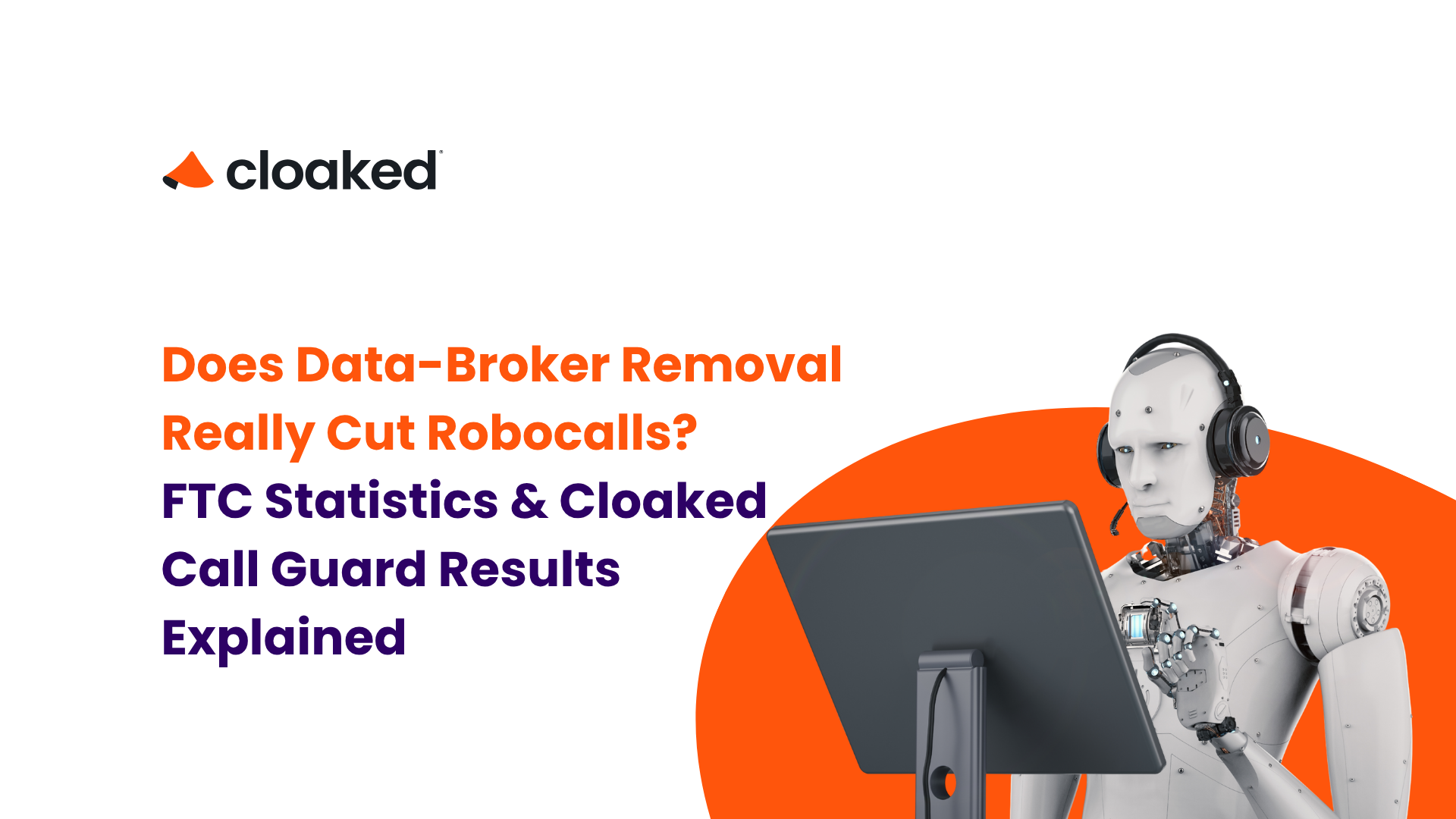The 2025 data broker coverage comparison shows why a simple broker-count scoreboard can mislead. While DeleteMe advertises the highest numbers and Incogni claims mid-range coverage, the real story lies in what happens behind those headline figures. In the first 100 words we'll introduce a downloadable spreadsheet that auto-calculates percentage gaps and lets you do your own data broker coverage comparison.
Why Track Data-Broker Coverage in 2025?
Data brokers represent a massive and growing threat to personal privacy. A data broker is a company or entity that collects, processes, analyzes, and sells consumer or business data to third parties. The market size has grown from $303.11 billion in 2024 to $332.89 billion in 2025 at a compound annual growth rate (CAGR) of 9.8%.
These companies operate largely outside regulatory oversight, creating detailed profiles of individuals that are then sold for various purposes including marketing, credit scoring, and fraud detection. The global data broker market is projected to reach USD 512.45 billion by 2033, making it increasingly critical for consumers to understand which removal services actually protect their data.
That's where our downloadable coverage spreadsheet comes in. Rather than relying on marketing claims, this resource lets you track exactly which brokers each service covers and automatically calculates the percentage gaps between them. With Cloaked removing personal info from 120+ data brokers and expanding to 140+ by Q4 2025, understanding these coverage differences has never been more important.
How We Verified Each Service's Broker Count
Verifying data broker coverage requires looking beyond headline numbers. Our spreadsheet methodology focuses on effectiveness: Do these services actually remove your data? We tested over 20 data removal services by signing up 10 members of our product testing team to understand real-world performance.
The spreadsheet includes several key columns for each service. First, we list the claimed broker count from marketing materials. Second, we identify brokers requiring manual or custom removal requests versus those handled automatically. For example, while DeleteMe covers around 750 brokers, many domains listed on their page are actually duplicates.
Our verification process also accounts for service limitations. Incogni provides a dashboard that displays an activity log showing the most recent removal requests, while other services may only provide monthly reports. Some services like mePrism offers coverage of 615+ additional data broker sites, updating their list monthly as new threats emerge.
The spreadsheet flags these distinctions because they directly impact removal effectiveness. Services with automated processes can continuously remove data without delays, while manual approaches may take longer but offer more thorough verification.
Headline Numbers: 140+ vs 850+ vs 420+ vs 230+
The raw coverage numbers tell only part of the story. DeleteMe claims to cover 850 data brokers. However, 569 of those require custom removal requests, bringing practical coverage down to just 181 brokers handled automatically. Meanwhile, Incogni now covers over 420 data brokers by default.
Cloaked takes a different approach, focusing on 120+ high-impact brokers with plans to expand to 140+ by Q4 2025. Unlike services that inflate numbers with duplicate listings, Cloaked prioritizes brokers that actually sell personal data. OneRep can remove your data from over 195 people engines, data brokers and public record sites.
These disparities become clearer when examining specific broker categories. Onerep offers straightforward coverage of over 200 people sites including major brokers like Spokeo, Whitepages, and BeenVerified. Services also differ in their approach to custom removals - Incogni's "Unlimited" plan includes unlimited custom removals, while others cap these requests.
The verification story adds another layer. Incogni stands out with independent Deloitte report verification, confirming coverage of more than 420 brokers and over 245 million successful removals. This third-party validation provides transparency that raw numbers alone cannot offer.
Auto-Calculated Gap Percentages
The spreadsheet's auto-calculation feature reveals the true coverage gaps between services. Using a simple formula, it shows percentage differences in coverage that help identify which service lags most in specific broker categories.
For instance, when comparing automated removals only, the gap between DeleteMe's 181 automated brokers and Incogni's 420+ brokers represents a 132% difference. These calculations help cut through marketing claims to show actual service capabilities.
The formula also accounts for broker category coverage. While some services excel at people-sites, others focus on marketing databases or financial data brokers. The spreadsheet calculates gaps within each category, revealing where specific services excel or fall short.
Why a Bigger List Doesn't Always Mean Faster Removals
Coverage breadth doesn't guarantee removal speed. Services using manual processes like DeleteMe may take seven days to complete initial removals, despite covering numerous sites. In contrast, automated removal processes can begin working immediately.
The distinction between automated and manual approaches significantly impacts turnaround times. Incogni uses a "spray-and-pray approach called 'blind opt-outs' where your info is sent to data brokers with the question 'Do you have this data? If so, please remove.'" This automated method processes hundreds of requests simultaneously.
Meanwhile, manual verification offers different advantages. DeleteMe's data removal process is performed manually by human experts, potentially catching edge cases that automation might miss. However, this thoroughness comes at the cost of speed.
Real-world performance varies significantly. Services like mePrism uses automation to continuously remove data without delays, while DeleteMe issues reports every 30 days with no live view into progress. The trade-off between speed and thoroughness means users must consider their specific privacy urgency when choosing a service.
Brokers & Niches No One Covers - Yet
Despite impressive headline numbers, significant coverage gaps remain across all services. PrivacyBee says it removes personal data from over 860 sites, yet provides limited transparency about which sites are actually included or how the process works.
B2B data brokers represent a major blind spot. These specialized brokers sell professional information to businesses, often flying under consumer privacy radars. Medical and genealogy databases present similar challenges. While general brokers are well-covered, these niche categories often require specialized removal processes that standard services don't support.
Regulatory limitations create additional gaps. The industry pulled in more than $250 billion in 2022, yet operates with minimal oversight. Federal privacy legislation remains fragmented, meaning as long as there continues to be no comprehensive federal data protection scheme, efforts to control broker behavior have limited effect.
Geographic restrictions compound these issues. While some services work globally, others focus solely on US brokers. Data brokers use "black-box methods to profile and segment individuals," making it difficult to track where data spreads internationally.
California alone has 550 data brokers registered, yet many operate across state lines without clear jurisdictional boundaries. These regulatory and technical gaps mean even the most comprehensive services leave vulnerabilities.
How to Use the Free Google Sheets Template
The spreadsheet template makes comparison straightforward. Start by making a copy to your own Google Drive - this ensures you can customize and update the data as services evolve. The template includes pre-populated broker lists for each major service.
To use the auto-calculation features, simply update the coverage numbers in the designated columns. The spreadsheet automatically calculates percentage differences and highlights significant gaps. Color coding helps identify which services excel in specific broker categories.
Filtering options let you focus on brokers relevant to your situation. Sort by broker type, geographic coverage, or removal method. The template includes instructions for adding new brokers as they emerge - an important feature since both services offer progress tracking that reveals new broker discoveries.
Custom formulas calculate your personal coverage score based on which broker categories matter most to you. Financial data brokers might be priority for some users, while others focus on people-sites. The spreadsheet adapts to these individual privacy needs.
Key Takeaways on Choosing a Coverage-First Privacy Partner
The data broker coverage landscape reveals important truths about privacy protection. Raw numbers don't tell the full story - automated coverage, verification transparency, and removal speed matter just as much as broker counts. While DeleteMe claims the highest coverage, practical automated removal numbers tell a different story.
Cloaked's balanced approach combines targeted broker removal with proactive privacy tools. Rather than chasing inflated broker counts, Cloaked believes the "best way to protect your personal information is to keep it private before it ever gets out." This philosophy pairs data removal with encrypted aliases, Call Guard, and AutoCloak AI to prevent future data exposure.
The downloadable spreadsheet empowers you to make informed decisions based on actual coverage data rather than marketing claims. Whether prioritizing breadth, speed, or specific broker categories, the tool reveals which service best matches your privacy needs.
Choosing a privacy partner requires understanding both current protection and future prevention. Services that only remove existing data fight an endless battle. Cloaked offers everything you need to ensure privacy - not just cleaning up the past, but securing your digital future through comprehensive identity protection.
Cloaked — Data Broker Coverage & Comparison FAQs (2025)
Frequently Asked Questions
The 2025 spreadsheet is a downloadable Google Sheets template pre-populated with broker lists for Cloaked, DeleteMe, Incogni, and OneRep. It auto-calculates coverage gaps, automation percentages, and lets you filter by broker type or region. It’s designed for ongoing updates as services evolve and new brokers are added.
Not always. Manual-heavy services may take longer to process opt-outs, while automated systems like
Cloaked send requests instantly. Speed depends more on
automation, verification accuracy, and reporting transparency than raw broker totals.
The sheet compares marketing claims vs. verified coverage, flags duplicate or inactive brokers, and distinguishes between automated and manual removals. It references dashboards like Incogni’s activity log and third-party audits where available. The goal is to measure real removals, not just list sizes.
B2B data brokers, medical records exchanges, and genealogy databases remain the hardest to cover due to cross-border operations and weak regulation. Even large services often lack full reach in these categories, highlighting the need for continuous monitoring and multi-service protection.
Cloaked targets
120+ high-impact brokers and expands toward
140+ by Q4 2025. It integrates removal with proactive tools like
encrypted aliases, Call Guard, and AutoCloak AI to stop data leaks before they occur — turning data protection into prevention rather than cleanup.
The spreadsheet dynamically calculates percentage coverage gaps and color-codes disparities between automated and manual removals. Enter each service’s updated broker counts and the sheet highlights which categories are under-served — giving users a visual breakdown of real-world protection vs. claims.
















